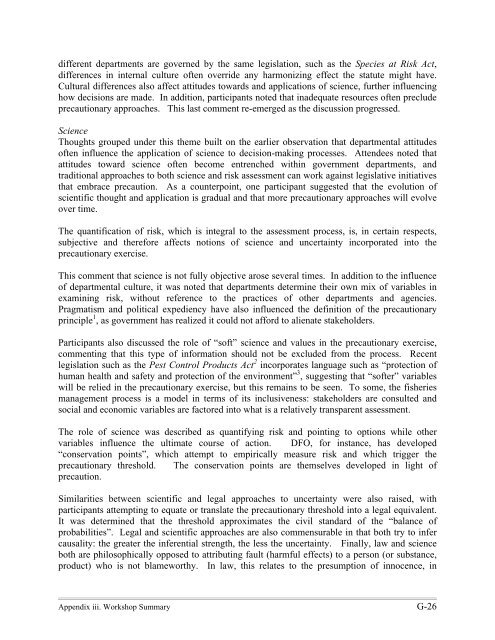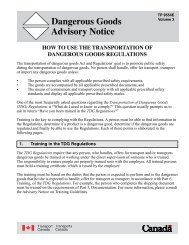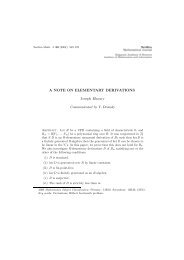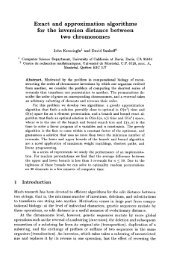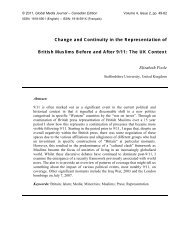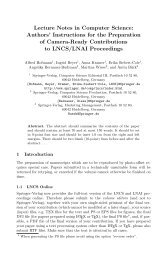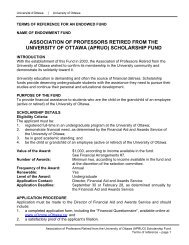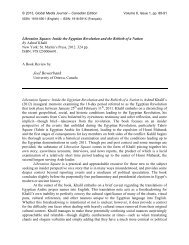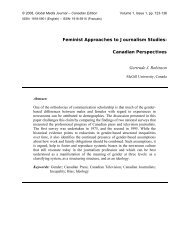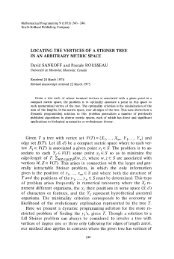PRACTICING PRECAUTION and ADAPTIVE MANAGEMENT ...
PRACTICING PRECAUTION and ADAPTIVE MANAGEMENT ...
PRACTICING PRECAUTION and ADAPTIVE MANAGEMENT ...
- No tags were found...
Create successful ePaper yourself
Turn your PDF publications into a flip-book with our unique Google optimized e-Paper software.
different departments are governed by the same legislation, such as the Species at Risk Act,differences in internal culture often override any harmonizing effect the statute might have.Cultural differences also affect attitudes towards <strong>and</strong> applications of science, further influencinghow decisions are made. In addition, participants noted that inadequate resources often precludeprecautionary approaches. This last comment re-emerged as the discussion progressed.ScienceThoughts grouped under this theme built on the earlier observation that departmental attitudesoften influence the application of science to decision-making processes. Attendees noted thatattitudes toward science often become entrenched within government departments, <strong>and</strong>traditional approaches to both science <strong>and</strong> risk assessment can work against legislative initiativesthat embrace precaution. As a counterpoint, one participant suggested that the evolution ofscientific thought <strong>and</strong> application is gradual <strong>and</strong> that more precautionary approaches will evolveover time.The quantification of risk, which is integral to the assessment process, is, in certain respects,subjective <strong>and</strong> therefore affects notions of science <strong>and</strong> uncertainty incorporated into theprecautionary exercise.This comment that science is not fully objective arose several times. In addition to the influenceof departmental culture, it was noted that departments determine their own mix of variables inexamining risk, without reference to the practices of other departments <strong>and</strong> agencies.Pragmatism <strong>and</strong> political expediency have also influenced the definition of the precautionaryprinciple 1 , as government has realized it could not afford to alienate stakeholders.Participants also discussed the role of “soft” science <strong>and</strong> values in the precautionary exercise,commenting that this type of information should not be excluded from the process. Recentlegislation such as the Pest Control Products Act 2 incorporates language such as “protection ofhuman health <strong>and</strong> safety <strong>and</strong> protection of the environment” 3 , suggesting that “softer” variableswill be relied in the precautionary exercise, but this remains to be seen. To some, the fisheriesmanagement process is a model in terms of its inclusiveness: stakeholders are consulted <strong>and</strong>social <strong>and</strong> economic variables are factored into what is a relatively transparent assessment.The role of science was described as quantifying risk <strong>and</strong> pointing to options while othervariables influence the ultimate course of action. DFO, for instance, has developed“conservation points”, which attempt to empirically measure risk <strong>and</strong> which trigger theprecautionary threshold. The conservation points are themselves developed in light ofprecaution.Similarities between scientific <strong>and</strong> legal approaches to uncertainty were also raised, withparticipants attempting to equate or translate the precautionary threshold into a legal equivalent.It was determined that the threshold approximates the civil st<strong>and</strong>ard of the “balance ofprobabilities”. Legal <strong>and</strong> scientific approaches are also commensurable in that both try to infercausality: the greater the inferential strength, the less the uncertainty. Finally, law <strong>and</strong> scienceboth are philosophically opposed to attributing fault (harmful effects) to a person (or substance,product) who is not blameworthy. In law, this relates to the presumption of innocence, inAppendix iii. Workshop Summary G-26


